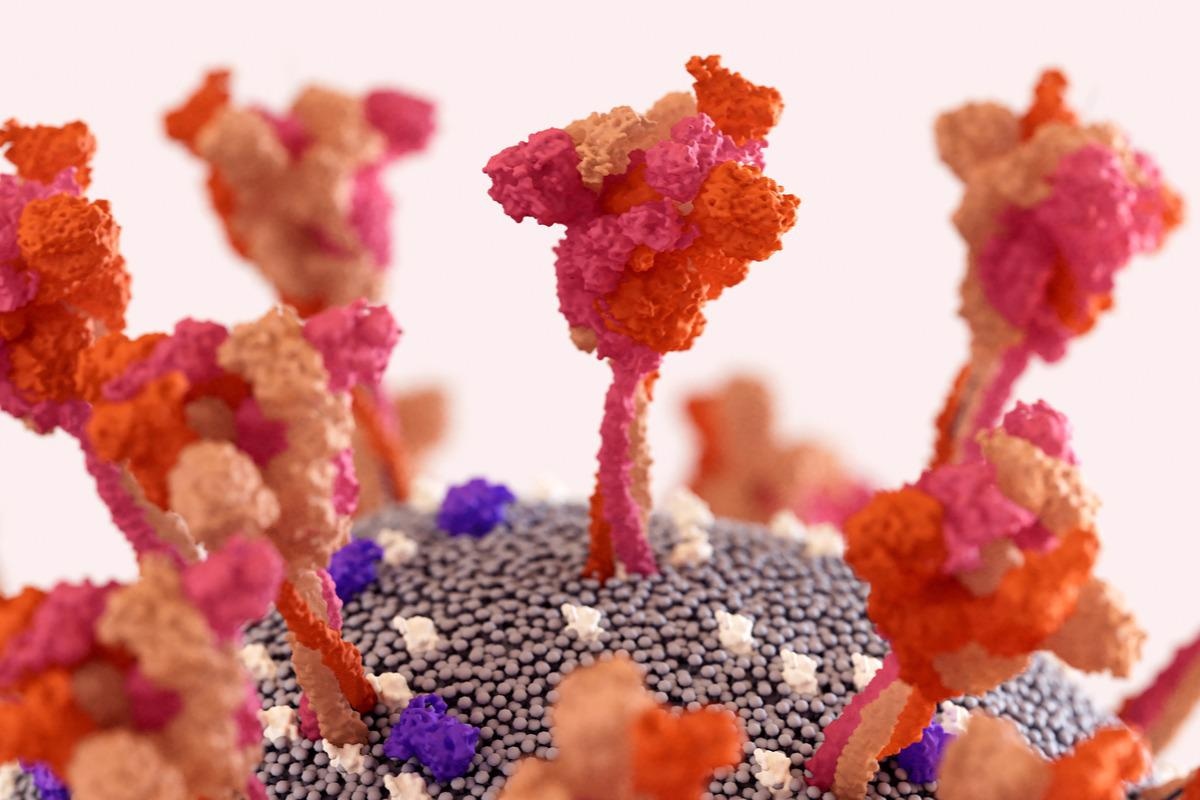Authors: Tarun Sai Lomte Mar 24 2022 BioRxiv
In a recent study posted to the bioRxiv* preprint server, researchers evaluated the stability and expression of mutations in the spike (S) protein of severe acute respiratory syndrome coronavirus-2 (SARS-CoV-2).

Background
The coronavirus disease 2019 (COVID-19) pandemic caused by SARS-CoV-2 has resulted in extensive research into S protein. Its evolution introduces several variations in the protein surface that negatively affect the efficiency of antibodies elicited by vaccines. The virus requires the S protein for host cell entry, and vaccines against SARS-CoV-2 are designed with S protein as the target. The prominent presence of anti-S antibodies in a population might induce selection pressure in the virus to modify its S protein structure to evade vaccine- or infection-induced antibodies. Such antigenic drifts drive the emergence of novel variants with persistent challenges. Moreover, understanding the effects of evolution requires knowledge of the protein’s structure.
The study
The present study assessed whether protein expression levels might serve as a proxy for fold stability. The principal objective was to examine whether expression and ACE2- receptor-binding domain (RBD) binding measured experimentally could relate to the thermodynamic stability of the RBD mutants.
Expression data on the effect of RBD point mutations on ACE2 binding and yeast expression were previously reported. The impact of mutations on expression levels was calculated as the log mean fluorescence intensity difference relative to wildtype. The effect on ACE2 binding was determined from the apparent dissociation constants difference relative to the wildtype.
The free energy change of protein folding (ΔΔG) was computed using three in silico methods: Deep DDG, SimBa-IB, and mutation cutoff scanning matrix (mCSM) protein stability. In its apostate determined by cryo-electron microscopy, eight experimental structures of S protein were obtained from the protein data bank (PDB). SimBa-IB program calculated the mutated sites’ relative solvent accessible surface area (RSA), and the ΔΔG and RSA values were reported as average values.
Results
The authors observed that the effect of mutations on ACE2 binding and expression was strongly correlated. Moreover, the expression levels could affect binding constants even at the same level of ACE2 affinity. The free energy or stability changes were predicted and later compared with binding and expression changes observed experimentally using the three computational methods. The stability effects, as computed, observed that mutations in the 388 – 390 stretch had an impact on the stability of the protein.
Related Stories
- Vaccine effectiveness against COVID-19 severity in the elderly
- Maternal and infant antibody levels and transplacental transfer following SARS-CoV-2 infection and vaccination
- New model suggests long-range transmission of SARS-CoV-2
The effect of the mutation at each site was calculated as the mean absolute effect of 19 mutations as a surrogate of tolerance at each mutant site. Expression-affecting mutations were mainly inside the core RBD subdomain, particularly the central beta-sheet with the alpha-helices flanking it. The mutations affecting ACE2 binding were primarily observed in the ACE2 binding subdomain or the central beta-sheet.
The mutations affecting the stability of the protein were observed in the structured core of the RBD. RBD mutations affected its expression, binding, and stability differentially, although some overlap between protein expression and stability was observed. Next, the authors quantified the relationship by plotting predicted ΔΔG values against the changes observed in the expression and ACE2 binding of RBD for all mutations and each experimental structure with three methods.
RBD expression and ΔΔG for individual structures were correlated with varying magnitudes based on the type of prediction. Similarly, ACE2 binding and ΔΔG were associated to varying degrees based on the prediction method; nonetheless, the correlations (for binding) were weaker than that for expression, and the observed correlations were statistically significant.
The effects of mutations on protein stability correlated well with ACE2 binding and protein expression, better with the Deep DDG prediction. The expression and binding results were skewed, over-representing data points between 0 and -1. Therefore, the data were grouped into bins; each bin’s mean binding and expression effect and predicted stability energy values were calculated. The research team noted an increase of correlations upon binning, and it is noteworthy that the computational data correlated well with the binned experimental data.
Lastly, the study reported that mutations deeply buried in the protein core have a more significant effect on protein stability. Similar was the case observed for RBD, in which mutations in the core were less tolerated than those on or near the surface. A moderate correlation was observed when the effect of mutations on the binding and expression was studied regarding the surface exposure of RBD residues with a noticeable tolerance overall at sites with increased solvent exposure.
Conclusions
The current study’s findings demonstrated that the computed protein stability effects were significantly correlated with expression levels for all 48 comparative investigations, but to a certain extent with ACE2 binding. Further, there was a correlation between predicted stability changes and surface exposure.
Therefore, experimental mutational properties could be predicted, at least partly, and the phenotypes might correlate because of underlying correlators such as amino acid properties, site solvent exposure, and codon usage. Such correlations impact the S protein’s mutability, affecting phenotype tradeoffs and viral evolution.
